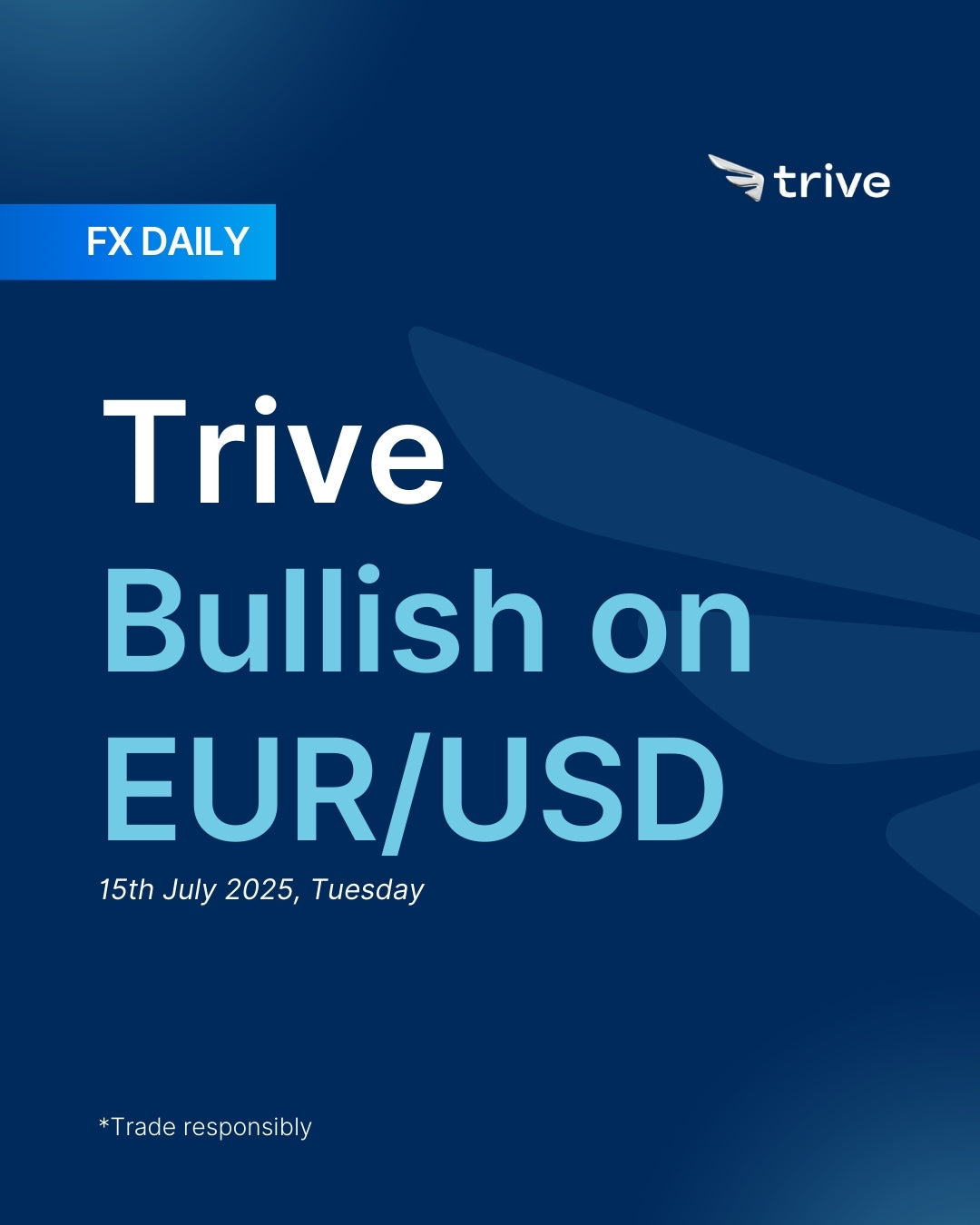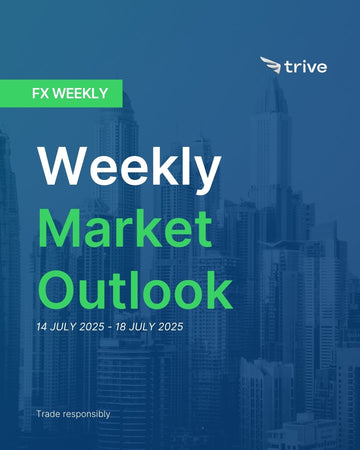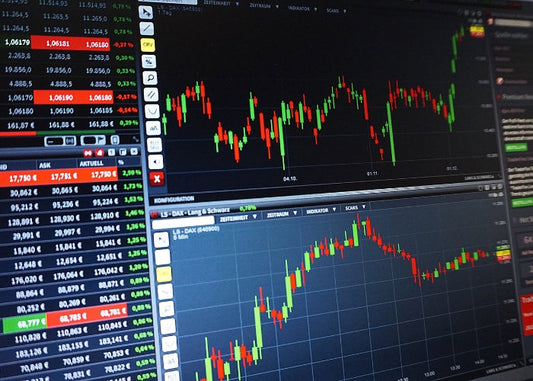FX Daily: Trive Bullish on EUR/USD

EUR/USD has room to rebound, supported by resilient Eurozone data, cautious ECB tone on further easing, and easing near-term trade fears after the U.S. extended tariff deadlines. Strong German industrial output and improving investor sentiment suggest underlying euro strength. If upcoming EU data surprises positively and U.S. CPI softens, EUR/USD could push higher, especially as markets reassess USD positioning.
EUR: Buy in dips
The euro came under pressure all week as escalating U.S. trade rhetoric and broad-based strength in the dollar weighed heavily on the single currency. After peaking near 1.1830 last week, EUR/USD steadily retreated back toward the 1.16 area as markets struggled with conflicting signals about potential Trump administration tariffs. Even though some Eurozone indicators showed resilience and tentative optimism emerged around U.S.–EU negotiations, the dominant driver remained dollar strength and persistent uncertainty over trade policy.
Eurozone economic data offered a mixed picture. German industrial output surged by 1.2 percent month-on-month in May, rebounding strongly from the prior month’s 1.4 percent decline and providing welcome support for Europe’s largest economy. The July Sentix index of investor sentiment leapt to 4.5, up sharply from expectations around 1.1, signaling a meaningful improvement in confidence. Both Germany and France reported better-than-forecast trade results for May: Germany’s surplus widened to €18.4 billion on weaker imports, while France saw its deficit narrow to €7.8 billion. Despite these external-sector gains, retail sales across the euro area fell 0.7 percent in May, matching forecasts after a revised 0.3 percent rise in April. Inflation readings were similarly varied: French CPI under the EU harmonized standard rose 0.9 percent year-on-year in June, slightly above the 0.8 percent forecast, while Germany’s final HICP reading confirmed 2.0 percent year-on-year inflation.
Within the European Central Bank, policymakers offered a spectrum of views on the path ahead. ECB Vice President Luis de Guindos expressed hope that exchange rate stability would avoid negative spillovers, while Swedbank’s chief economist, Andreas Centeno, questioned whether a 25-basis-point cut would “do the trick,” highlighting downside risks. Jens Weidmann’s successor at the Bundesbank, Joachim Nagel, suggested the bank should “neither plan nor rule out” further rate adjustments. Chief economist Philip Lane emphasized a data-dependent approach and a meeting-by-meeting assessment in light of global policy shifts. On Friday, Isabel Schnabel struck a notably hawkish tone, arguing that the bar for another cut was “very high” and that further easing was “not appropriate,” whereas fellow Governing Council member Fabio Panetta countered that a continuation of rate cuts could be warranted if growth risks intensified disinflationary pressures. Market pricing still factors in about 19 basis points of ECB easing by year-end, although a cut in July is seen as highly unlikely.
The U.S. EU tariff saga remained front and center for euro-area markets. The week began with EU hopes of securing an agreement before the original July 9 deadline, which the U.S. later extended to August 1. Mid-week reports suggested Washington had offered a baseline 10 percent reciprocal tariff on all EU goods, excluding sectors like aircraft and spirits, creating a tentative path to de-escalation. President Trump then hinted on Wednesday that a formal tariff letter was “probably two days off,” fueling speculation of a temporary framework deal. Brussels nonetheless insisted its regulatory framework was non-negotiable. By Friday, Trump confirmed the EU would receive a letter detailing new rates, with market rumors ranging from a 20 percent blanket tariff to levies higher than those applied to the U.K., despite EU denials of direct notification. Alongside the U.S. spat, the EU navigated its own trade frictions with China, including reciprocal medical-device restrictions, adding another layer of complexity.
Overall, the key story for the euro was not internal fundamentals but rather the “USD story.” Strong U.S. labor-market data, fading dollar-short positioning, and the perception that Trump’s tariff moves were tactical all reinforced dollar strength. Ongoing trade uncertainty prevented a sustained euro bounce, and late-week nervousness over a potential U.S.–EU deal even prompted de-risking in luxury-sector equities, underlining how sensitive those names are to trade outcomes.
Despite persistent dollar strength, a string of encouraging euro area indicators suggests the Euro can mount a modest rally. Germany’s industrial output jumped 1.2 % in May and the Sentix investor sentiment index rose sharply to 4.5, underlining underlying resilience. Robust export numbers from Germany and France further bolster external demand support for the euro. Meanwhile, several ECB officials have hinted at a more cautious approach to rate cuts, reducing market expectations for policy easing. The US delay of its EU tariff deadline to August 1 has also eased near-term trade worries, clearing a path for a gradual euro upswing.
Assuming Tuesday’s Economic Sentiment survey and the final CPI readings meet or exceed expectations, we’ll maintain our weak bullish baseline outlook.
USD: Tariffs again
The US dollar began the week strongly, driven by a combination of intensifying trade rhetoric and a growing market view that the latest tariff announcements were more about bargaining than about actually choking off imports. Despite traditionally risk-sensitive environments tending to boost the dollar when uncertainty rises, the dollar index pushed higher to re-test its weekly highs rather than retreating on President Trump’s tariff declarations. Many investors appeared to treat the new levies, along with the extended implementation deadline of August 1, as negotiating signals or simply closed out prior bets on a weaker dollar. That resilience held even as the administration added Japan, South Korea, Brazil and Canada to the list of nations subject to higher duties.
Although U.S. economic releases were relatively sparse, the figures that did emerge reinforced a broadly steady outlook. Initial weekly jobless claims for the period ending July 5 fell to 227,000, well below the 235,000 expected and down from a revised 232,000 the week before. The four-week average also declined, underscoring continued strength in the labour market. Continuing claims rose to 1.965 million, a bit less than forecast, adding to signs that layoffs remained subdued. In the realm of consumer sentiment, the New York Fed’s survey showed that one-year ahead inflation expectations eased slightly to 3.0 percent from 3.2 percent, while the three- and five-year outlooks held at 3.0 percent and 2.6 percent respectively. Respondents also reported somewhat firmer labour market prospects, suggesting households felt the jobs environment was holding up.
On the fiscal side, June’s budget figures surprised with a $27 billion surplus, a significant swing from May’s deficit and largely attributable to a record $27 billion in customs duties. Those higher revenues reflected the immediate impact of increased tariffs. Business sentiment, as measured by the National Federation of Independent Business index, dipped slightly to 98.6 in June from 98.8, mainly because small firms voiced worries about excessive inventories and ongoing tax concerns.
Minutes from the Federal Open Market Committee’s June meeting confirmed a divided Fed: most officials still saw some rate cuts as appropriate later this year, but only a few—possibly Christopher Waller and Michelle Bowman—indicated they could support a cut as soon as July if incoming data played out as expected. Other participants judged that current policy was sufficiently restrictive given persistent inflation and solid economic activity, and several noted that rates might already be close to neutral. Among individual Fed speakers, Mr. Waller described policy as “pretty restrictive” relative to what he judged neutral; Mary Daly urged a shift toward thinking about rate cuts in line with the median dot-plot view of two cuts in 2025; Lisa Mester observed that the economy was “in a good place” and that tariffs had so far only mildly affected prices; and Austan Goolsbee warned that fresh tariff threats could delay any easing, forcing the central bank to maintain a cautious, “wait-and-see” stance.
Market-implied probabilities for Fed easing oscillated modestly over the week. By Friday, traders were pricing about 18 basis points of rate cuts in September, and roughly 50 basis points of total easing by year-end—little changed from the prior week and reflecting renewed concerns that broadening tariffs could stoke higher inflation.
President Trump used the week to expand his tariff campaign, sending letters to a wide array of countries and threatening duties ranging from 20 percent on Vietnam and the Philippines to as much as 50 percent on Brazil. Some nations, including Canada, faced a potential carve-out for goods covered by the U.S.–Mexico–Canada Agreement despite a 35 percent notice, while others such as Laos and Myanmar saw levies of 40 percent. Trump held firm on the August 1 implementation date and hinted that the European Union might avoid a direct letter but could face a blanket 20 percent tariff or higher than what the U.K. receives. In talks with Japan, autos remained the chief sticking point, and the U.S. pressed South Korea to help curb Chinese imports. Mr. Trump also threatened 10 percent duties on any country perceived to back “anti-American” BRICS policies.
Despite the tariff flare-up, there was some easing of geopolitical risk when U.S. Secretary of State Marco Rubio and China’s Foreign Minister Wang Yi described their meeting as positive and agreed to strengthen diplomatic channels, raising hopes of a Trump-Xi summit. Meanwhile, progress in Israel-Hamas ceasefire talks in Gaza helped lift overall market sentiment late in the week.
The outlook for the US dollar has brightened over the past few weeks. Jobless claims came in at 227,000, which was well below the 235,000 forecast and highlights the resilience of the American labour market. In June a surprise $27 billion budget surplus driven by stronger than expected customs duties also supported demand for US government debt. The minutes of the Federal Reserve meeting showed some dissent among policymakers but a shared view that current interest rates are sufficiently restrictive to keep inflation under control, making rate cuts unlikely in the near term. Together these factors have made the market participants less bearish on the dollar.
However a sustained rally in the US dollar and a clear move of the DXY index above the 100 level would require more hawkish commentary from the Fed and strong domestic economic data. This week’s releases on CPI, retail sales and consumer sentiment will be pivotal. If these figures surprise on the upside they could reignite dollar strength and push the DXY above 100.
Heading into the release of the Consumer Price Index, the US dollar may hold onto its recent gains. Our baseline bias for the dollar will emerge once the CPI figures are published and will be fully confirmed after the Retail Sales and Consumer Sentiment reports are released. A softer CPI print would support our bearish outlook, whereas a notably stronger reading would pave the way for further dollar strength.

Disclaimer
This material is provided for informational purposes only and does not constitute financial, investment, or other advice. The opinions expressed in this material are those of the author and do not necessarily reflect the views of Trive International. No opinion contained in this material constitutes a recommendation by Trive International or its author regarding any particular investment, transaction, or investment strategy. This material should not be relied upon in making any investment decision.
The information provided does not consider the individual investment objectives, financial situation, or needs of any specific investor. Investors should seek independent financial advice tailored to their individual circumstances before making any investment decisions. Trive International shall not be liable for any loss, damage, or injury arising directly or indirectly from the use of this information or from any action or decision taken as a result of using this material.
Trive International may or may not have a financial interest in the companies or securities mentioned. The value of investments may fluctuate, and investors may not get back the amount they originally invested. Past performance is not indicative of future results.
For more information about Trive International, please visit http://trive.com/int
Additional Information
Investing involves risk, including the potential loss of principal. Diversification and asset allocation strategies do not ensure a profit or guarantee against loss. The content in this material is subject to change without notice and may become outdated or inaccurate over time. Trive International does not undertake any obligation to update the information in this material.
By accessing this material, you acknowledge and agree to the terms of this disclaimer. If you do not agree with these terms, please refrain from using this information.
No comments
Home
Trive
TriveHub





0 comments